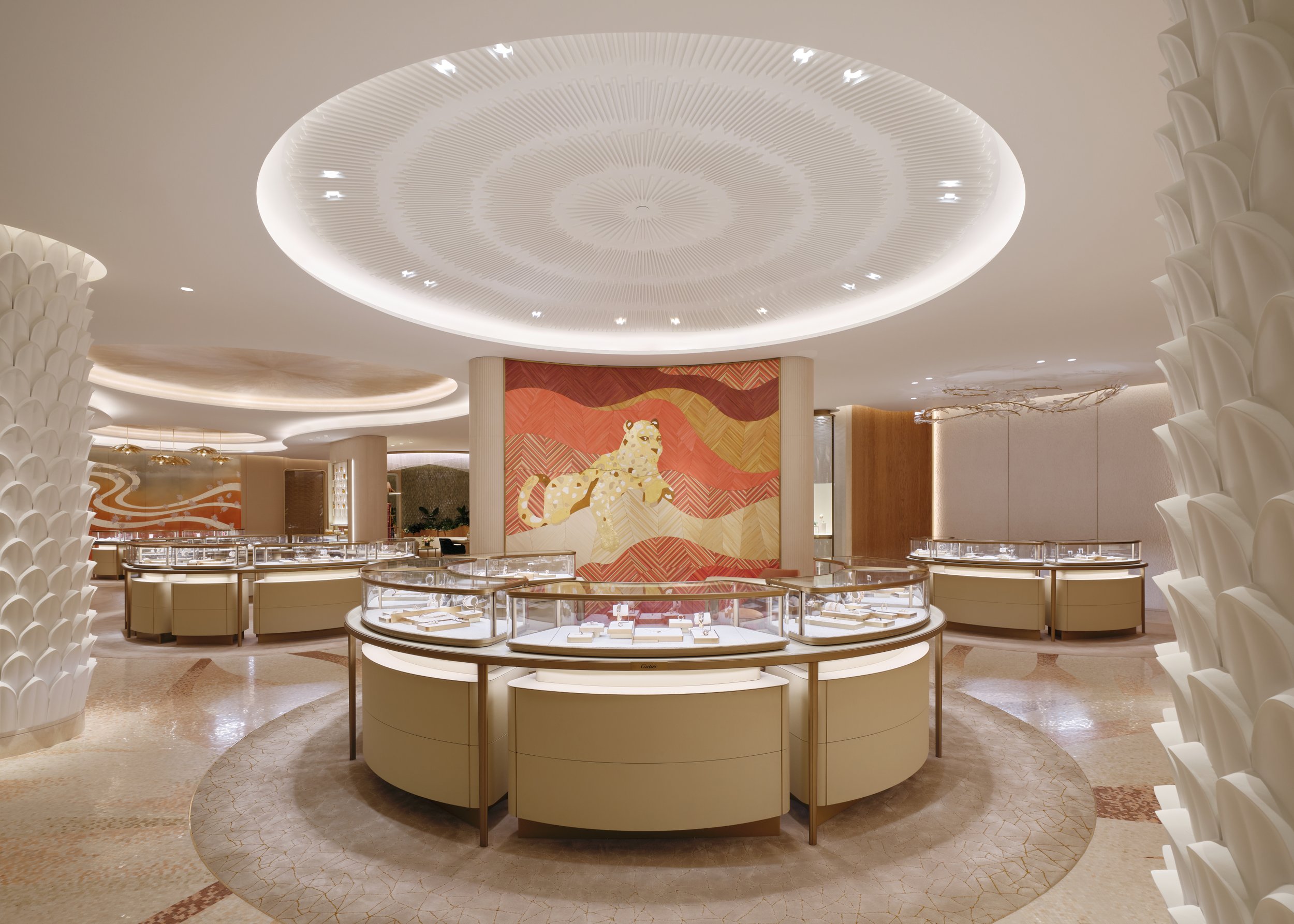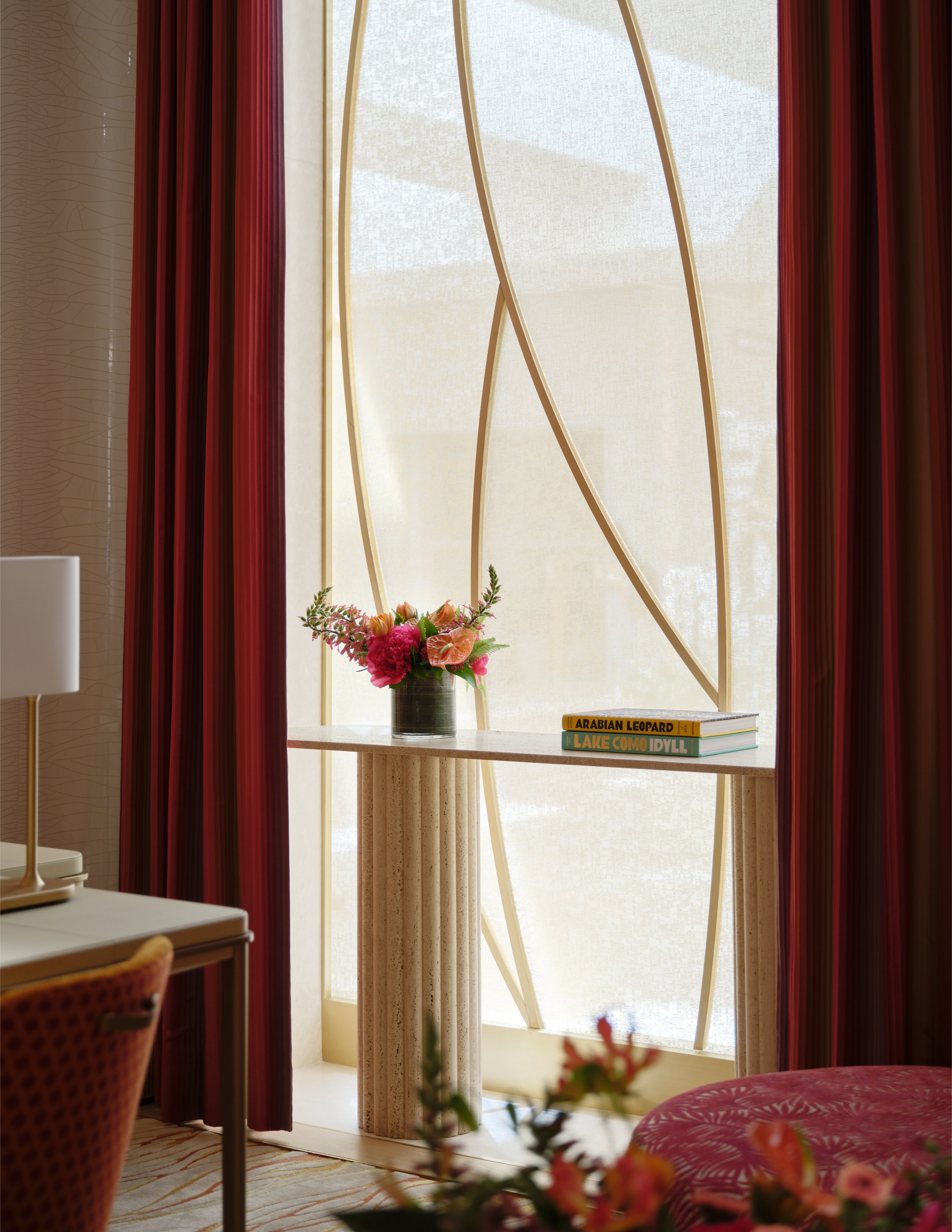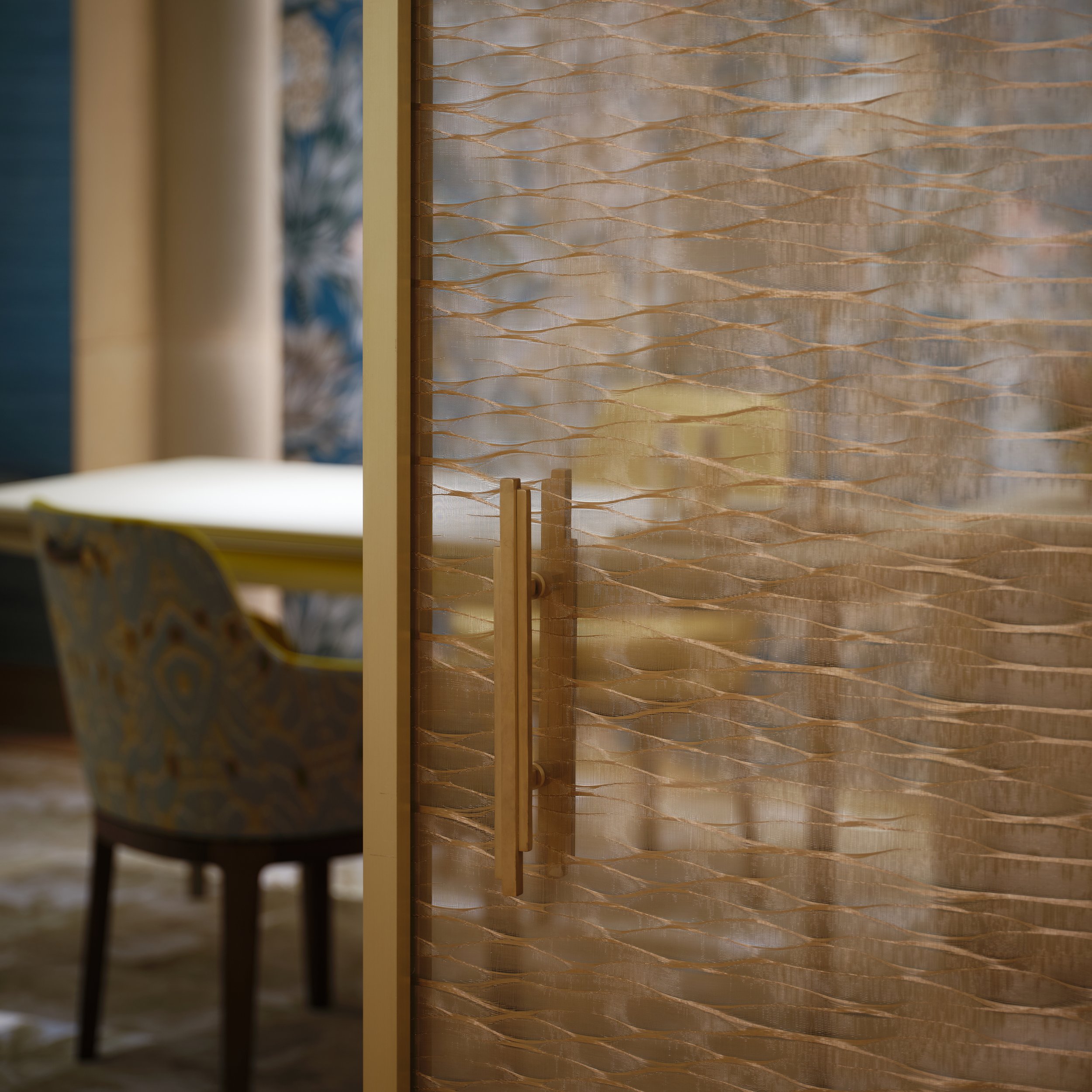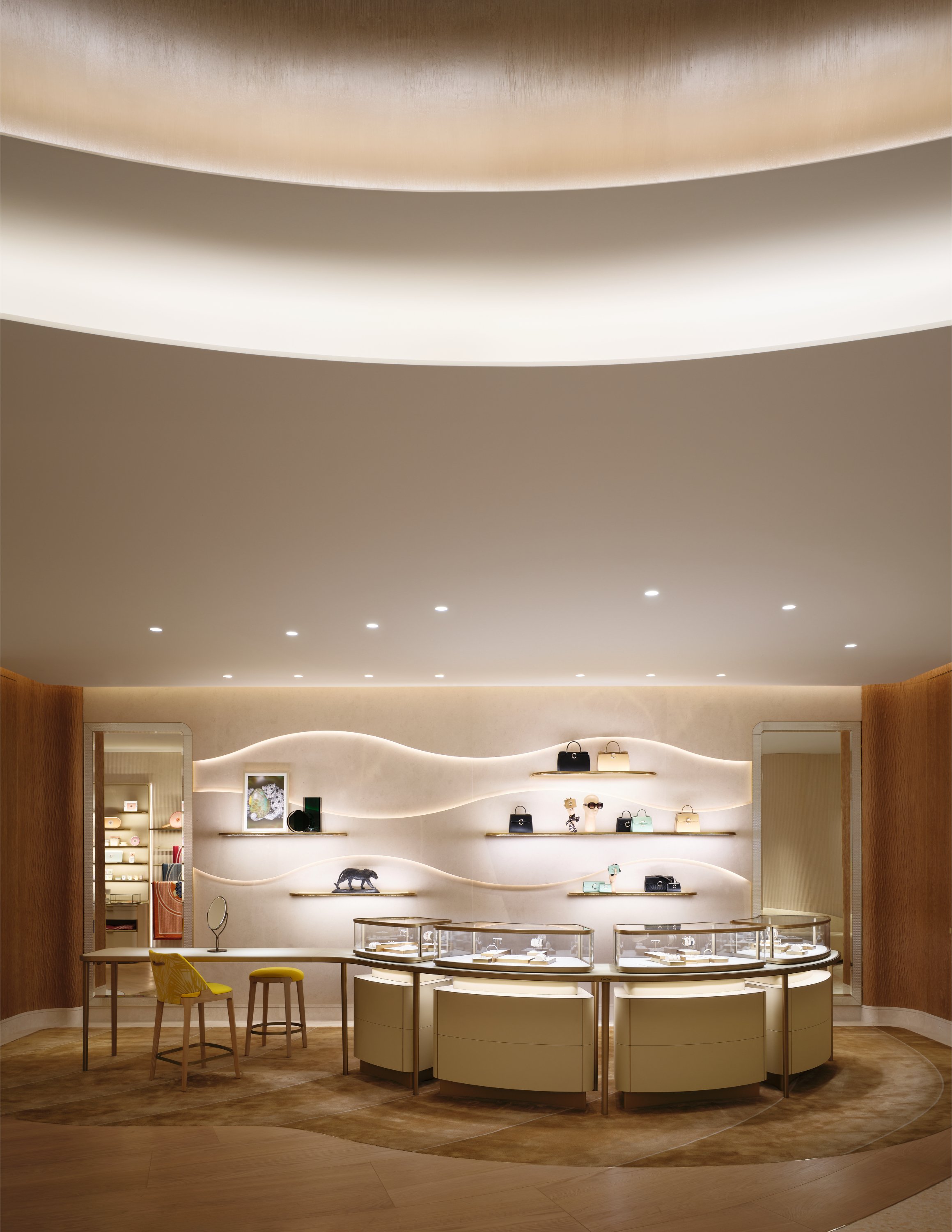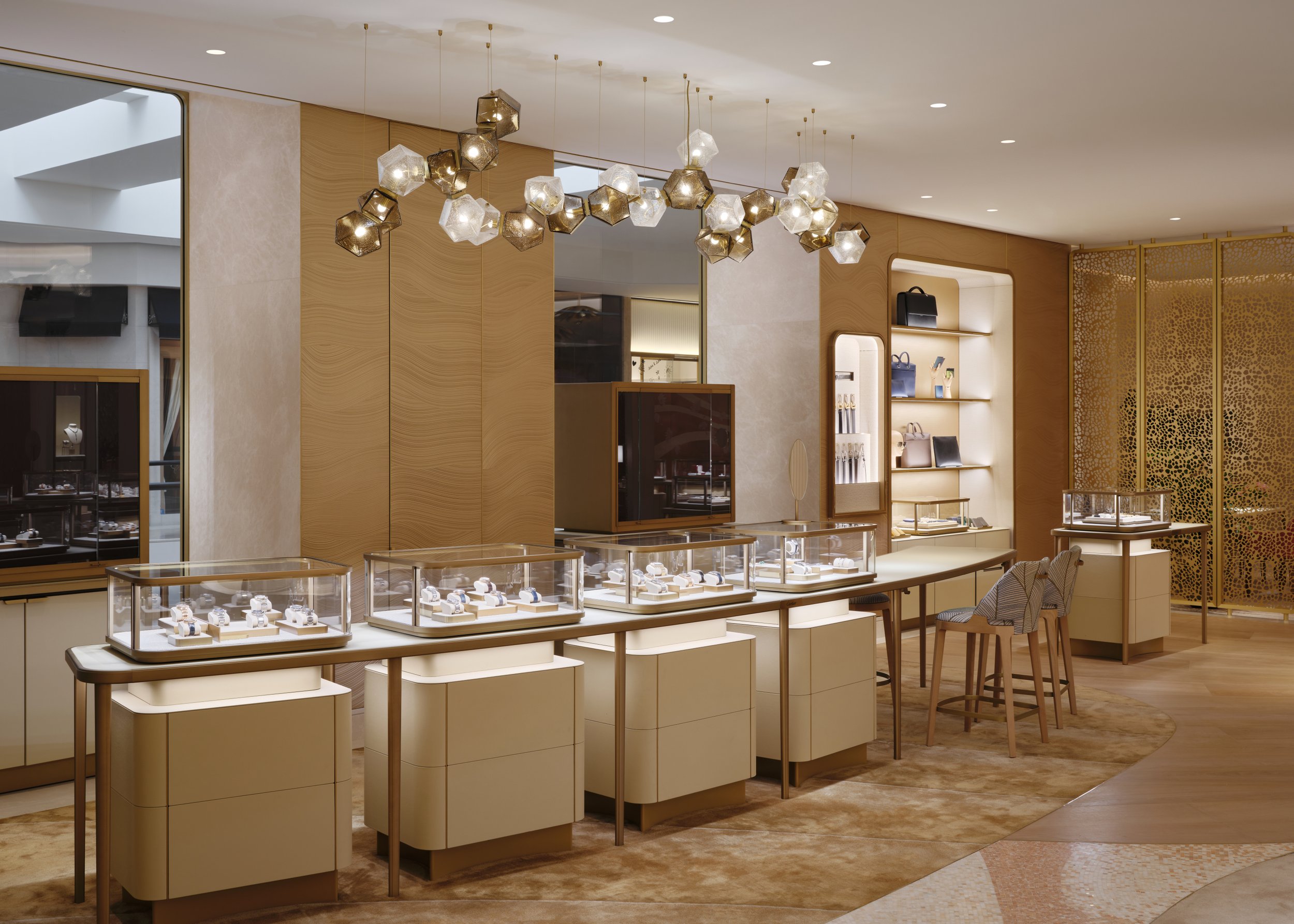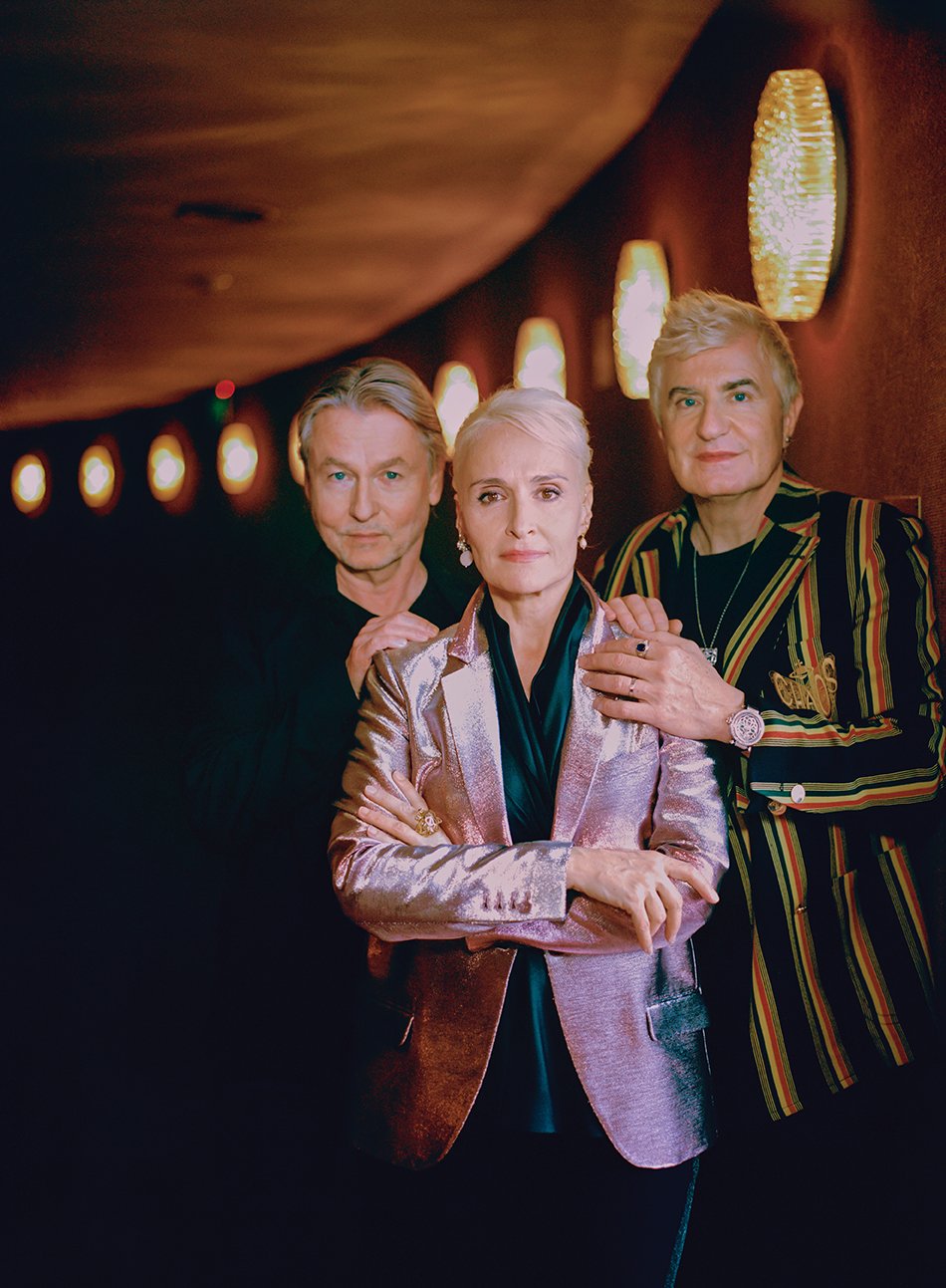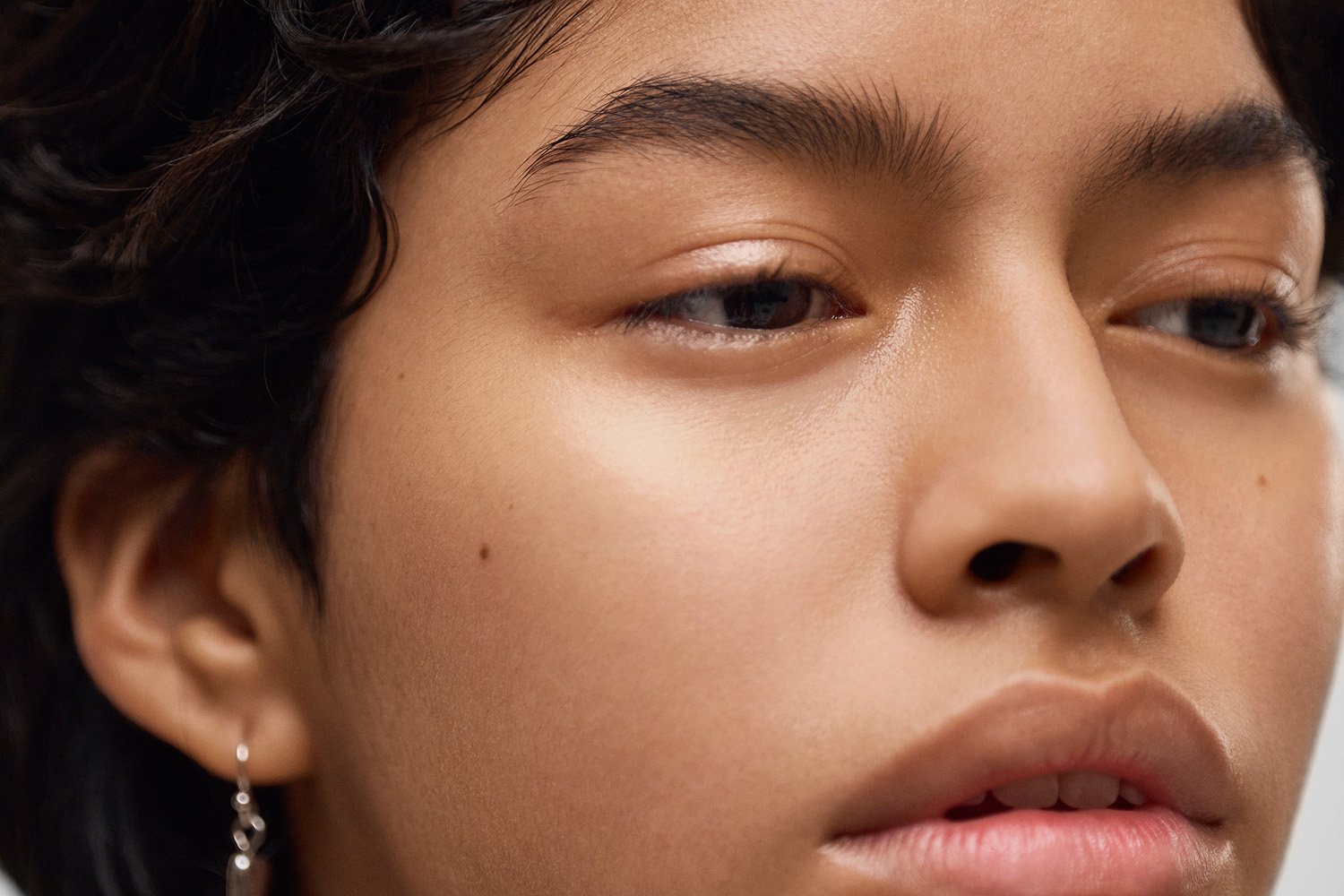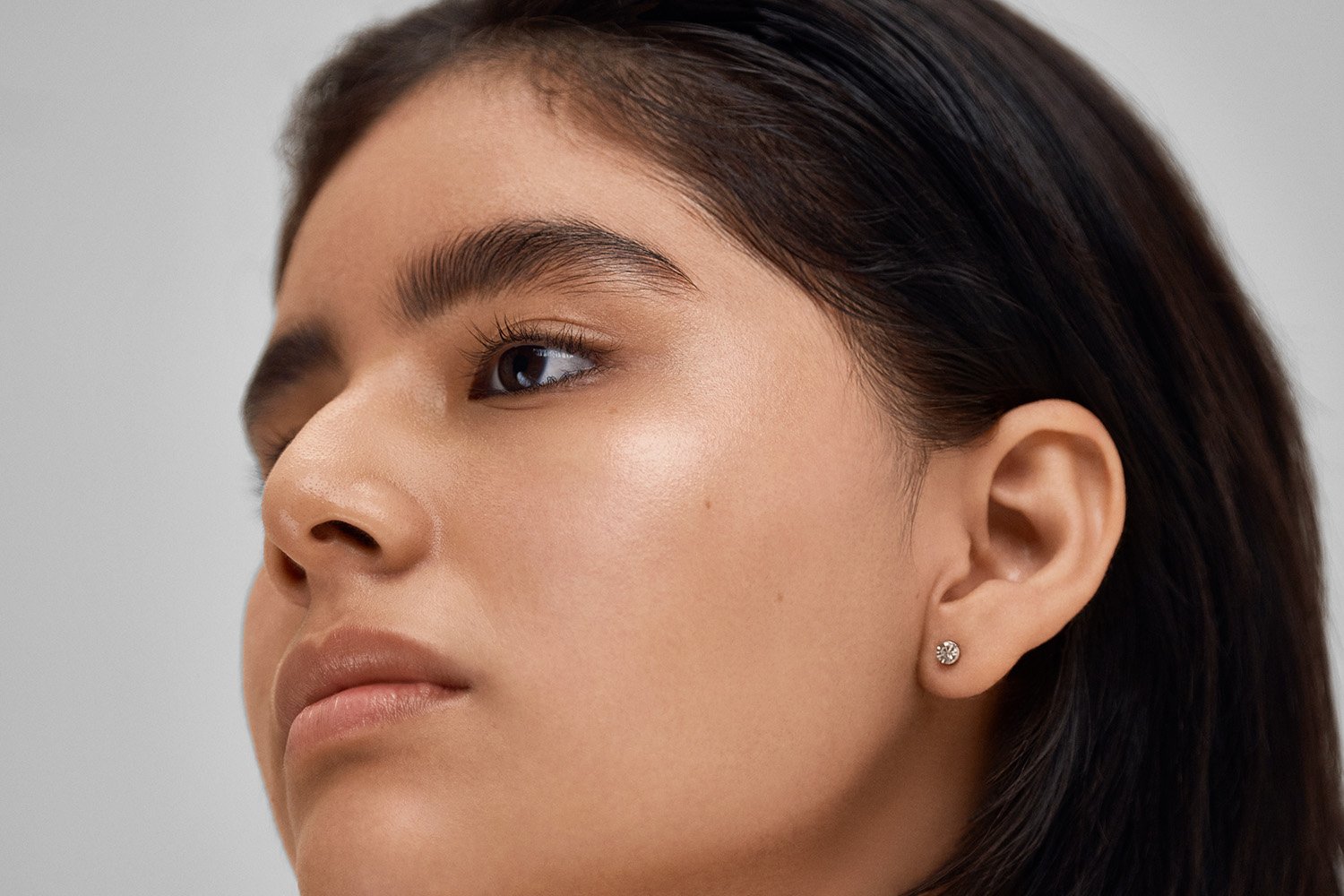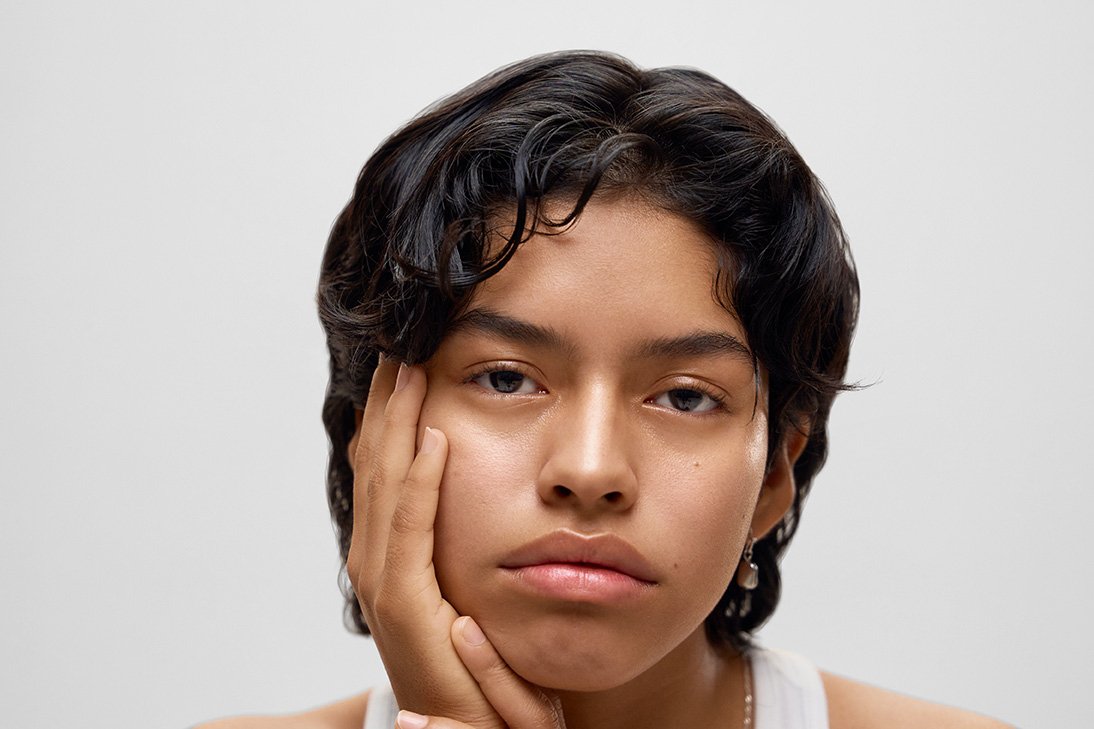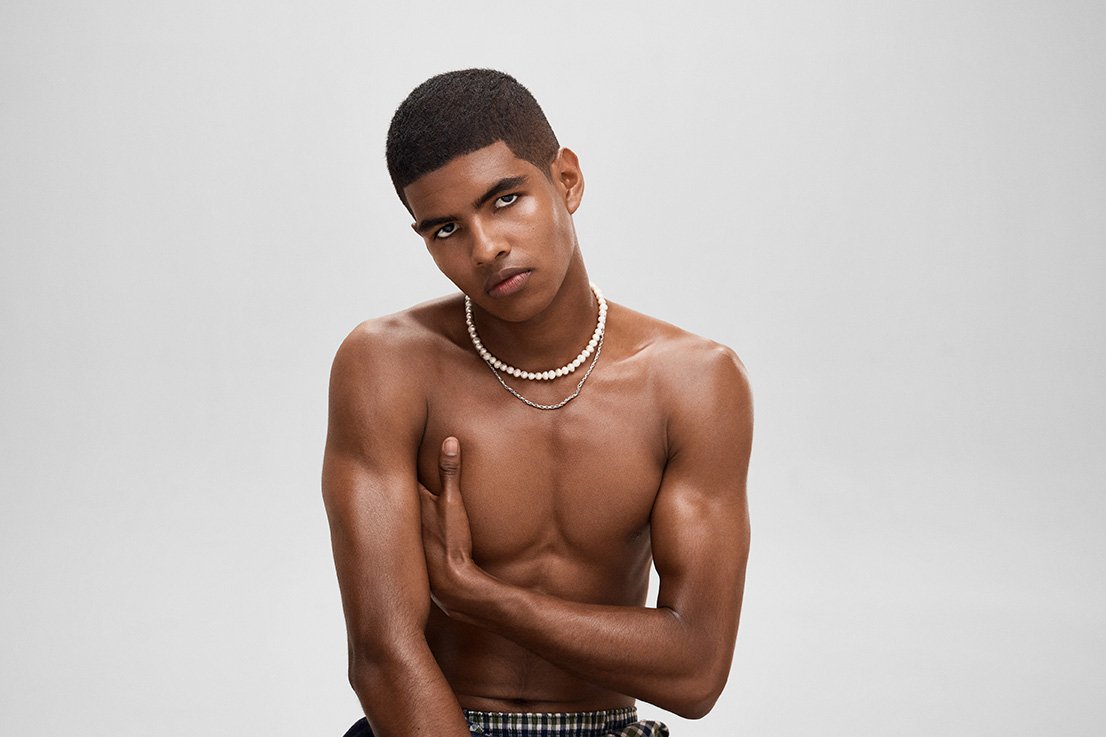interview by Oliver Kupper
portrait by Pat Martin
The Greek myth of Prometheus is one of the most powerful metaphors for our current era of emergency. Seeing Earthly mortals living in the brutal, primitive dark, he steals fire from the gods and offers it to humans as a form of technology and knowledge that would become vital to civilization. Knowing that humans would destroy the world with this new resource, Prometheus was bound eternally to a rock by the gods, where his liver was eaten each morning by an eagle and regenerated each night. In 1911, Russian composer and theosophist Alexander Scriabin created Prometheus: The Poem of Fire; a short, powerful composition inspired by the myth. It was intended to be performed not only with sound but also with a synesthetic explosion of lights. In March of 2024, The San Francisco Symphony and Cartier presented a multisensory reimagining of Scriabin’s Prometheus with olfactory curation, led by Finnish conductor and composer Esa-Pekka Salonen, pianist Jean-Yves Thibaudet, and Cartier’s in-house perfumer Mathilde Laurent. Together, they discuss their immersive collaboration.
OLIVER KUPPER The myth of Prometheus, who gave the world fire, light, and inspiration very much fits within the milieu of levity. Through the lens of Alexander Scriabin's piece, what are your definitions of levity?
MATHILDE LAURENT The function of art is elevation. A way towards levity. This work, and the way Scriabin wanted to make all art forms meet, is really important nowadays. I think it helps us find a sense of optimism and light in our lives. Total art was a way to unite art with all the senses. This is where olfaction can help because it’s a very specific path in the brain and in the body. It is the only sense that creates unity between the brain, the heart, and the gut. This is a definition of ecstasy and of transcendence. So, we are here with French pianist Jean-Yves [Thibaudet] and Finnish conductor Esa-Pekka Salonen trying to create a transcendental experience toward light and joy.
JEAN-YVES THIBAUDET Beautiful. I agree with everything you said. God only knows how much we need to be elevated in this world with everything that's going on. That's why music is here too. I think music is the true elevation of the soul. After a concert, people would come to see me and say, “You know, for two hours you made me forget about all my problems, and it felt so good.” We are transporting people both with the music and the olfaction. We are taking them to another world. Now, Scriabin was probably a little crazy, in a good way. He was incredibly ahead of his time. I don't think he could show his pieces in the way we can do it now, certainly not with the lights. So, it was only an invention in his mind. And his music is very unique. You hear one chord of Scriabin and you know it couldn't be anybody else. I remember with Mathilde, when we heard it together—she was listening to it for the first time—how powerful it is. It's a power that is very hard to describe in words. He invented a language of harmonies, of colors. I can't even tell you how many years I've been dreaming about this project.
ESA-PEKKA SALONEN Prometheus is one of the most important myths. Today, we are facing, for the first time in the history of humankind, a moment where we are potentially using the tools we have developed to destroy not only ourselves, but the planet. And of course, it all started with Prometheus on a highly symbolic level. Scriabin’s Prometheus, The Poem Of Fire is technically a piano concerto. It's a piece that doesn't deal with the story in any particular narrative way. It's an expression of the ecstatic moment when Prometheus hands over the fire to humankind, which was, in his opinion, deserving of it. Scriabin was interested in this kind of mystical expression of joy and excitement. He was one of the pioneers of describing sexual love in his music. Not in concrete terms, but the sort of anticipation, excitement, and the climax. Scriabin somehow saw the act of Prometheus stealing the fire and giving it to humankind as not only the ultimate gift but also the ultimate sacrifice, because as we know, Prometheus was punished. So, it becomes almost like a physical manifestation of love. The only reason Prometheus gives the fire to humans is because he loves them. The Greek gods were fairly ordinary people, except that they were immortal. I think that's the center of this: the idea that what makes a life valuable and worthy is the fact that we know that it's finite. Every second counts.
KUPPER It's completely fascinating. Mathilde, you studied as a molecular chemist, which is the perfect background for somebody going into olfaction. Can you talk about your background in that?
LAURENT I wouldn't dare call myself a molecular chemist. I went to university to study chemistry, but I did not perform well. I only got my degree in chemistry to become a perfumer. I was scientific enough to get a degree. (laughs)
KUPPER What was it about olfaction that inspired you to begin with? I'm curious what your first memories of perfume were.
LAURENT I came to perfumery to express myself about the world and beauty—to offer something and to have a dialogue with other people. When I was a child, I was not only seeing and listening, I was smelling, touching, and tasting everything. I was hypersensitive. So, when I was thinking of choosing a job, I hesitated between architecture, photography, and perfumery. I was creative, so I needed a job with artistic expression. I was about to become a photographer, but then something interesting happened. I got a job writing articles for different psychoanalysts and scientists who were learning how a perfumer's brain works. This is when I realized that photography and perfumery are totally linked. Each smell has a photograph and each photograph has a smell.
KUPPER Both are very connected to memory.
LAURENT Exactly. They work together. I cannot smell something without printing an image in my mind. And now, I know that the brain works like that. You can register a photograph without the smell, but you cannot register a smell without a photograph of it. It’s the olfactory path I was speaking of previously. When you smell something, all of your senses are activated. Each time you detect a certain smell, you will come back to where you were, eating what you ate, listening to what you listened to, and feeling the same emotion, whether it’s a good or very bad one.
KUPPER It's very Proustian. Jean-Yves, I want to talk to you about your beginnings as a pianist because you were performing from a very young age.
THIBAUDET I was seven—a late bloomer. Growing up, I felt very lucky because I never thought of doing anything other than music, in particular, the piano. All my friends were having nightmares, saying, “We go to bed and think: what am I going to do when I grow up?” It was very heavy. So, I felt lucky. I said, “Well, I'll be a pianist.” I didn't know what it meant, but I thought it would just happen. My parents were not professional musicians, but music was very present at home and there was a piano. I also remember the sound of my father playing the violin. Music is almost like a smell for me. Music is also very much connected to memory and the brain in the same way that the other senses are.
KUPPER It's interesting that music and scent both have the language of notes. Mathilde, how did you write this score through the notes of olfaction?
LAURENT I just had to listen to the music. What I wanted to express through olfaction is what Jean-Yves and Esa-Pekka wanted to present to the audience through the music. So, I needed to have them tell me what they were feeling when playing, and the meaning of the different moments of the piece. It was about listening and sharing, and understanding the different instruments. We all agreed on three different areas in the piece: before the fire, the moment when the fire appears, and after the fire. Before the fire, the world was a dangerous place where man had to survive against thunder, cold, and wildness. Nature was an enemy. Immediately, I smell this place and I only have to evoke it: the smell of thunder, the smell of water, of ice, of anxiety, of cold nature, of wild vegetation, of humid earth, of stones.
KUPPER Esa-Pekka, when this was brought to you, how did you imagine the symphony hall adapting to this new olfactory technology?
SALONEN It's all about technology because every attempt to combine music and scent generally fails. We all know from experience that perfume lingers, because the alcohol, which carries the scent molecules, takes time to evaporate. Over a number of years, technology was developed to dry diffuse molecules without any carrier, which means that the experience is instantaneous and finite. You can accentuate things with the scent, and you can also regulate the intensity of it. It's all WiFi-controlled. I went to see Mathilde in her lab in the Fondation Cartier building, pre-pandemic. I was expecting to see a Severus Snape type of person mixing these vials. But no, her lab was all white with iMacs everywhere. And I said, “Mathilde, how do you create a scent? Do you experiment with various components and then come to the right one?” And she said, “Oh, no, no, no. Quite often, I conceive the scent in my dreams.” And then, she wakes up and writes it down. But she doesn't write it down as “This was the smell of daffodils in a field on an April morning.” She writes down an actual molecular formula. So, I realized that this is a highly sophisticated thing based on science and theory as much as sensitivity to fragrances. She had made thirteen scents based on Remembrance of Things Past, the big seven-part novel by Marcel Proust. And the scents were stored in leather boxes with nothing to see inside—just the molecules, I guess. So, she opens the lid and I sniff one called l’Heure Perdue, the most Proustian one, she said, because it’s about the smells of childhood, of grandmotherly things. It's interesting because my grandmother was not a very good cook. She was not particularly warm as a person. There was very little that was grandmotherly about her. She definitely didn't bake cookies. I was smelling the sort of archetypal “good grandmother” and that was astonishing. I said to Mathilde, “This takes me to a childhood I didn’t have. It’s somebody else's story, not mine, but it's pleasant nevertheless.” It’s powerful.
Read the full interview in Autre #18 The Levity Issue (SS24). Click here to preorder










